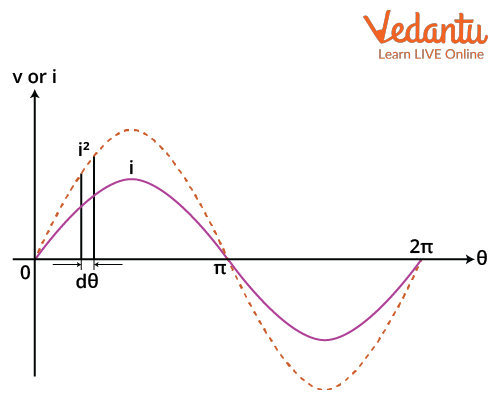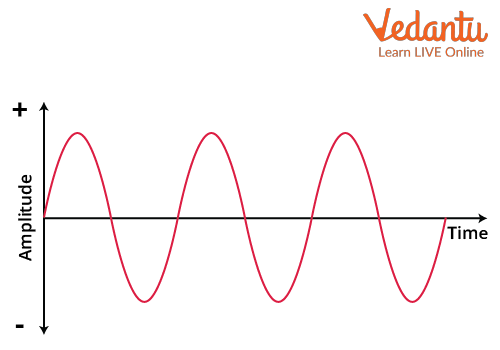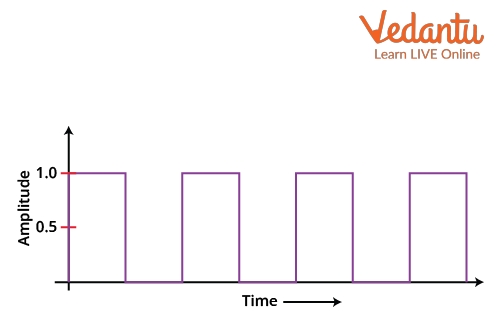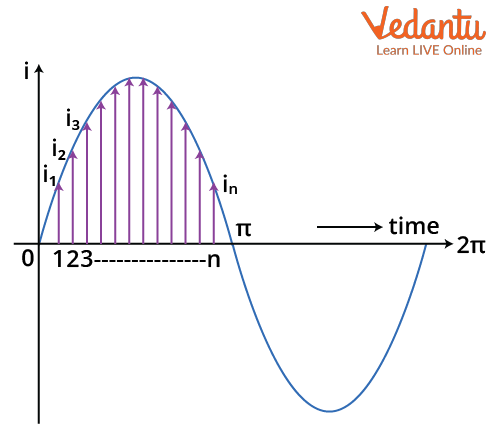




Difference Between RMS and Average Value for JEE Main 2025
Understanding Average Value and RMS Value is crucial for mastering topics in physics for JEE Main 2025. These concepts are widely applied in alternating current, wave motion, and electrical circuits. The average value gives the mean of a function over a specific interval, while the RMS value measures the effective value of a varying quantity.
This page provides comprehensive explanations, step-by-step calculations, and practical examples to help students to learn how to find RMS and average value of a waveform. By mastering these concepts, students can easily solve related problems and perform confidently in the exam.
Students can visit and download the other important study resources from the Vedantu website as this content is created by our master teachers and experts keeping in mind that it is updated according to JEE Main Syllabus.
JEE Main Physics Syllabus JEE Main Physics Revision Notes JEE Main Physics Important Questions JEE Main Physics Difference Between JEE Main Physics Question Papers
What are Average Value and RMS Value?
Average Value and RMS value are important expressions for sinusoidal waves. As we know that there are two types of sources and currents: the AC source and DC source; AC and DC. The AC or Alternating Currents is the one that repeats itself after 2π, whereas the DC current source is the one that does not alternate. Some important terms associated with both AC and DC are: RMS value, instantaneous value and the average value.
RMS value is the amount of heat produced by a resistor when at a time both AC and DC are passed through it. Average value is the area of the one cycle of sinusoidal wave to the time period. However, instantaneous value is the value at a particular instant. Let us further understand these concepts below.
RMS Value of Current
RMS or the root mean square value of current is the amount of heat produced by a resistor or circuit when an AC and DC pass through it. If we assume the RMS value of currents as Irms and its peak value is Im, then the RMS value formula is given as:
This is also referred to as the RMS value of alternating current, where Im is the maximum value of the sine wave.
RMS Value of Sine Wave
We have already seen the expressions for the RMS values but we will now derive the RMS value using the analytical method. Let’s first derive the RMS value of current and then we can generalise it for voltage too. Since the sine wave is symmetrical, we can calculate the RMS value by considering the half cycle only.

Sinusoidal Wave
We know that the equation of a sinusoidal alternating current i is given as
Since the current changes from positive to negative in a n AC signal, we will use the squared current wave because it is always positive for our calculations.
Let’s consider i2 to be the average height of the strip in the above figure. The area of this strip A will be
The area of the half cycle of i2 wave will be given as
The mean i.2 or the mean square current can be found by dividing the area by the period or in this case
The root mean square current will be given by the root of the mean square current. This will be
This is the expression for the root mean square current. This whole derivation can be repeated for the voltage too and the root mean square voltage will also be
As discussed above the RMS value of a sine wave is denoted as

Alternating Current or AC
Im and Vm here are the peak value of current and voltage respectively. Vm or Im from above can be calculated as Vrms
RMS Value of Square Wave
As we have calculated the RMS value of sinusoidal waves, similarly, we will calculate the RMS value of a square wave. The RMS value is basically just the root of the mean square value. Suppose we have a square wave as given below.

A square wave
The mean square of this wave form can be given as
We can solve this integral by breaking it into two parts from 0 to
This is the mean square, now the root mean square voltage will be given as
This means that the rms value of a square wave is the same as its magnitude. Suppose the magnitude of a square wave is A, then its rms value will also be equal to A.

A square wave
Average Value of AC
When AC is converted to DC using a rectifier, this converted value of AC is known as the average value of AC. The average value of a sinusoidal wave can be calculated graphically or using the standard sinusoidal equation. By using the standard sinusoidal equation, the average value of AC comes out to be
Average Value of AC Formula
We will now find the average value for any AC signal. Let’s consider the graph of an AC sinusoidal waveform.

AC Sinusoidal Waveform
Now the average can be found by dividing the area under the graph of the sine wave by the total time period for which the area has been found.
The average for the full cycle will be given as
Now we know that the time period is related to the angular frequency as
Substituting this in the above expression gives,
So the average value of AC for a full cycle is zero.
For half cycle similarly we can find the average as
The average value of the AC formula is thus given as
W
It is true for a half cycle, for a full cycle, however, the average value of voltage is zero.
Instantaneous Value
The instantaneous value of AC, on the other hand, is its value at a particular instant. In one cycle, there are multiple instances of a wave. Look at the figure below.

Instantaneous Value of a Sine Wave
Now, we know that the current in a sine wave can be expressed in terms of its amplitude Im as
For any value of t we can find the value of the current. This means that this is the formula for the instantaneous current at a particular value of t. If we want to find the value of current for a particular angle
This way we can find the instantaneous value of AC.
Significance of Average Value and Root Mean Square (RMS) Value in JEE Main 2025
Fundamental Concepts: These values are essential in analysing alternating currents, waveforms, and signal processing, forming the basis for various topics.
Problem-Solving Skills: Mastery of these concepts enables efficient tackling of numerical problems involving periodic functions and electrical circuits.
Application Across Topics: Knowledge of average and RMS values is applicable in multiple subjects, enhancing overall performance.
Scoring Potential: Questions related to these concepts are common in JEE Main, offering opportunities to secure marks with proper understanding.
Tips for JEE Main 2025 preparation
Know the Syllabus: Focus on high-weightage topics in Physics, Chemistry, and Maths.
Make a Study Plan: Allocate time for concept building, practice, and revision.
Strengthen Basics: Use NCERT textbooks to build a strong foundation.
Practise Regularly: Solve past papers and take topic-wise mock tests.
Time Management: Learn to balance time between subjects and questions.
Revise Often: Maintain short notes and revise formulas frequently.
Use Quality Resources: Refer to trusted books and platforms like Vedantu for guidance.
Mock Tests: Take weekly mock tests and work on weak areas.
Consistency: Stick to your plan and maintain discipline.
Self-Care: Get enough rest, eat healthily, and stay positive.
Benefits of Vedantu Study Resources for JEE Main 2025
Expert-designed study materials aligned with the JEE Main syllabus.
Live classes for real-time doubt-solving and better understanding.
Mock tests with detailed analysis to improve performance.
Free PDFs, notes, and practice questions for easy revision.
Flexible learning with recorded sessions and self-paced courses.
Personalised doubt-clearing sessions for focused preparation.
Comprehensive coverage of Physics, Chemistry, and Mathematics.
Conclusion
AC and DC are fundamental supply sources in an electric circuit, be it the respective voltage or the currents. AC as we know is important as the supply to our homes is AC, as well as the appliances. However, it does not neglect the DC supply as it too is used for various applications. Electronic circuits such as TV Clock, laptop, LED strip etc all use DC supply. Moreover, solar panels themselves produce DC. With different sources comes the ways to denote them. Thus, average , rms and instantaneous values play an important role. Each one of these quantities have their own significance which are as discussed above.
JEE Main 2025 Subject-wise Important Chapters
The JEE Main 2025 subject-wise important chapters provide a focused strategy for Chemistry, Physics, and Maths. These chapters help students prioritise their preparation, ensuring they cover high-weightage topics for better performance in the exam.
Important Links for JEE Main and Advanced 2025
Access a curated collection of study materials and tips to excel in JEE Main and Advanced 2025, helping you prepare effectively for these prestigious engineering entrance exams.






FAQs on Physics Average Value and RMS Value JEE Main 2025
1. Is the supply of AC voltage coming to our households of the rms value or the peak value?
The value of supply being fed to our is 440 volts peak or 230 volts RMS. This value of supply voltage operates or is denoted at a frequency of 50 Hz. The frequency varies from one country to another. In India, the frequency for supply is 50 hz with a tolerance limit of +0.5 or -0.5. Usually, the supply coming to our homes is denoted as the RMS value. For a household with a single phase supply, the value of supply voltage is 230 volts. Its peak value can be calculated from the relation given above.
2. What is the significance of RMS value and where is it used in day-to-day applications?
RMS value in an electric circuit produces the same amount of heat as an AC when passed through a resistor. Thus, from this, we can understand that the RMS value of an AC wave is equal to the DC source of the same value as AC producing the same heat.
One of the major applications of a RMS value of supply is that it is used in households. In India, the RMS value of supply voltage is 220 volts, where in the USA it is 110 volts. The difference in the two is due to the standard frequency used in both the countries. We can also use RMS value in an electric circuit to find the equivalent DC value.
3. What is the difference between average and RMS value?
Average Value: It's the arithmetic mean of the instantaneous values of a waveform over one complete cycle. For sinusoidal waveforms, the average value is zero because positive and negative portions cancel out.
RMS Value: It's the square root of the mean of the squares of the instantaneous values over one complete cycle. It represents the equivalent DC value that produces the same heating effect as the AC waveform in a resistor.
4. How to calculate the average and RMS value for different waveforms?
Sinusoidal Waveform:
Average Value = 0
RMS Value = V_0/√2 (where V_0 is the peak voltage)
Square Waveform:
Average Value = V_max/2 (where V_max is the peak voltage)
RMS Value = V_max (same as peak)
Triangular Waveform:
Average Value = V_max/3
RMS Value = V_max/√3
5. Why is understanding average and RMS value important for JEE Main?
Circuit Calculations: RMS value is used in AC circuit calculations involving power, current, and resistance.
Instruments: Understanding RMS helps interpret readings from meters that measure AC quantities.
Concept Comparison: Comparing average and RMS values for different waveforms provides insight into their behaviour.
6. What is the average value and RMS value in waveforms?
The average value is the mean of a waveform over a complete cycle, while the RMS value is the square root of the mean of the squares of the waveform, representing its effective value.
7. How does Vedantu explain the RMS and average value of different waveforms for JEE Main 2025?
Vedantu offers detailed lessons with solved examples and visual aids to help students understand RMS and average values for waveforms like sine, square, and triangular waves.
8. What is the difference between RMS and average value?
The RMS value measures the effective power of a waveform, while the average value gives the mean over a cycle. RMS is always higher than or equal to the average value for non-DC waveforms.
9. Where can I download a RMS and average value of different waveforms PDF?
Students can access PDFs on RMS and average values from the Vedantu website, providing in-depth explanations and practice questions.
10. How are RMS and average value of different waveforms calculated?
The RMS value is calculated using the formula 1T∫0Tf2(t)dt\sqrt{\frac{1}{T} \int_{0}^{T} f^2(t) dt}T1∫0Tf2(t)dt, while the average value is found using 1T∫0Tf(t)dt\frac{1}{T} \int_{0}^{T} f(t) dtT1∫0Tf(t)dt, over a time period TTT.
11. How does Vedantu help define RMS value and average value effectively for JEE Main 2025?
Vedantu provides easy-to-understand definitions, examples, and interactive sessions to ensure students can grasp the concepts clearly and apply them in exams.
12. What are the practical applications of RMS and average value?
RMS is widely used in power calculations for AC circuits, while the average value helps in signal processing and determining rectified DC voltage.
13. How to find RMS and average value of a waveform using Vedantu resources?
Vedantu provides step-by-step guides, video tutorials, and practice worksheets that teach students how to calculate RMS and average values for various waveforms.
14. Why are RMS and average values of different waveforms important for JEE Main?
These concepts are essential in alternating current and circuit analysis topics, which frequently appear in JEE Main numerical problems.
15. What is the significance of the RMS and average value in physics?
RMS and average values are key in understanding electrical power, signal efficiency, and thermal effects in AC systems, making them integral for physics and engineering studies.



































